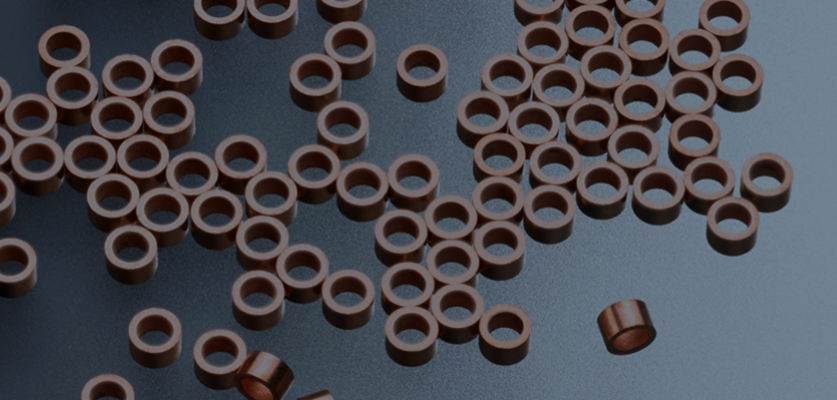Avoiding a Blame Game over Part Tolerances
Tolerances are one of the fundamentals of small parts sourcing that have an impact on optimizing for manufacturability. Specifying tolerances requires striking a balance between cost and the need for accuracy.
By distinguishing between critical and non-critical tolerances, you can avoid the cost of over-engineering your parts.
That means when you have one part with different attributes that require tolerances — such as both a diameter and a radius — you need to consider which one is the more critical dimension.
However, this last point raises another issue: What happens when the same part has multiple tolerances that conflict with each other?
What are conflicting tolerances?
The term conflicting tolerances can be used to mean any specified, multiple tolerances that simply do not make sense together.
For example, a drawing for an electronic component might show two conflicting tolerances on the component pitch: The first tolerance is boxed and uses the general drawing tolerance for three decimal places, ± 5 μm (0.0002”); immediately below that is an accumulative pitch (four single pitches) with a tolerance of ± 50 μm (0.002”).
The risks of conflicting tolerances
Machinists hate this type of conflicting tolerance because it forces the manufacturer to choose between the conflicting requirements.
If the tolerances are programmed into a machine, it can cause tools to crash and can significantly damage delicate positioning features. And that can require expensive repairs or parts replacement, and result in production delays, missed deadlines, and higher costs.
In addition, with more complex assemblies, the effects of conflicting dimensions can multiply, resulting in tolerance buildup and unacceptable variations in the intended design.
When multiple tolerances require correction
When multiple tolerances are in conflict in this way, it is often a matter of incomplete dimensioning or plain old human error.
Fortunately, an alert and knowledgeable technician can spot discrepancies and knows to go back to the customer or other source for more information — to determine the intent and make corrections in the specifications to resolve any conflict.
The issue of both loose and tight tolerances
Another type of conflicting tolerances is actually a very common occurrence: when a single part has an easily met, loose tolerance coupled with a tight tolerance in another dimension.
For example, you might have a loose tolerance of ± 0.01” (0.254 mm) for length along with a very tight tolerance of ± 0.001” (0.0254 mm) in perpendicularity, making the part more difficult to produce.
Can you achieve a tight tolerance in one dimension and a less costly, looser tolerance in another? The reality is, you might not be able to achieve both, as specified, in a single part.
That’s because the rule of thumb is, the tighter tolerance is the one that must guide production — determining the type of machine and tools to be used, and ultimately driving the cost of the part.
So, you must look at a part in its totality and consider all of the tolerances to get a true picture of process and cost.
For instance, a very large corner radius can reduce the diameter, because the part needs to be tumbled a long time to achieve the radius. This would require a tighter tolerance and eliminate the cost benefit of specifying a looser, overall outer diameter.
When multiple tolerances require compromise
Frequently, these conflicting tolerances require accepting a compromise. For example:
- You might need to specify a tighter length tolerance to hold a tight perpendicularity.
- With a radius and a diameter, you might need to compromise on the diameter to achieve a more critical dimension (a minimum end radius).
With our earlier example of a loose length and tight perpendicularity, you might need to make a choice:
- Does the perpendicularity really need to be that tight?
OR
- Do ALL of the tolerances — including the length — need to be tighter to achieve the required perpendicularity?
Adjusting for multiple tolerances to optimize
Remember, choosing the proper tolerances helps to ensure proper part performance, ease of assembly and, ultimately, product quality. When multiple tolerances conflict with each other, the challenge is to correct or compromise to avoid issues that will cost you time, money, and quality.
The good news is that adjusting one tolerance (or several tolerances) slightly can help you be sure to achieve your most critical dimension so that you meet your end goal.
By identifying the most challenging tolerance and determining the best way to achieve it, you can get a clear picture of the process that needs to be used and what the cost will be.
In addition, a knowledgeable manufacturing partner can help you make informed decisions and understand the trade-offs that often must occur when you have one part with multiple tolerances.






